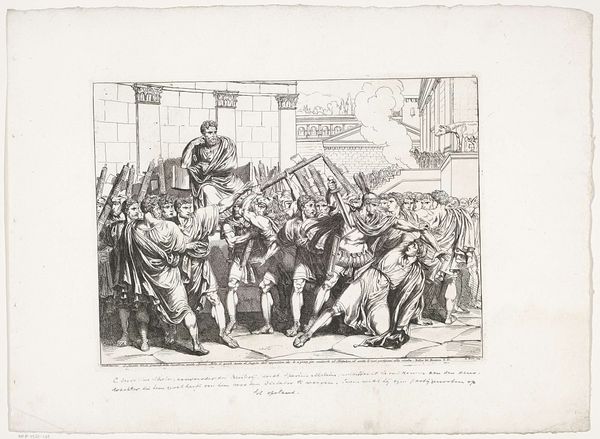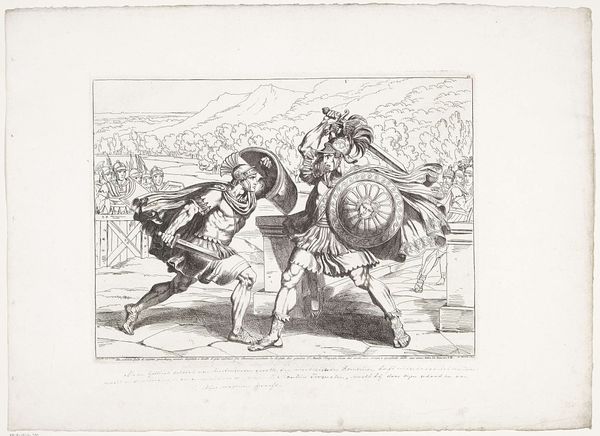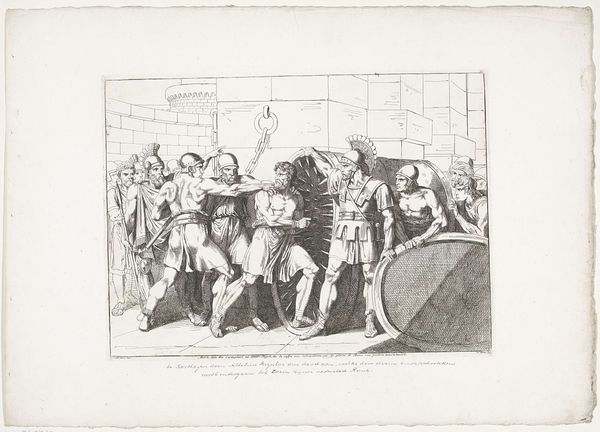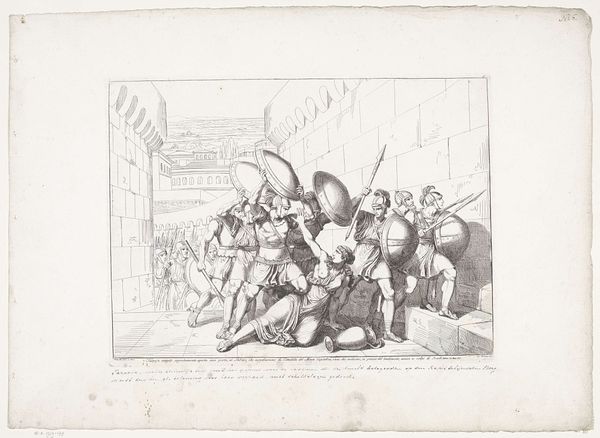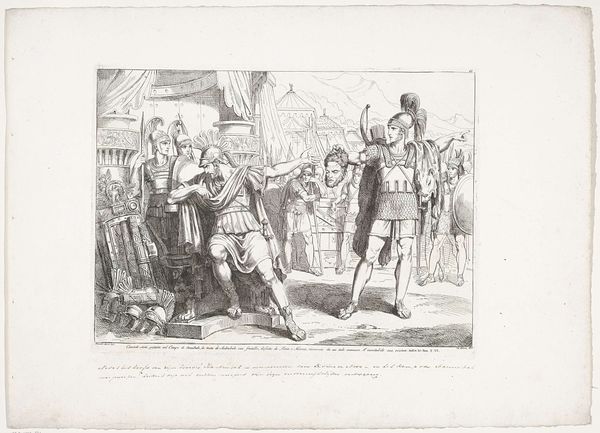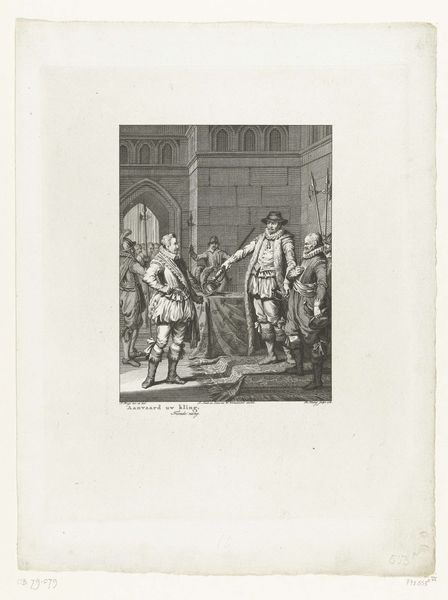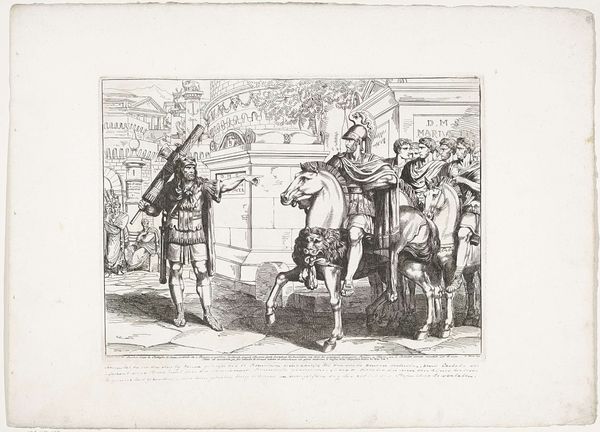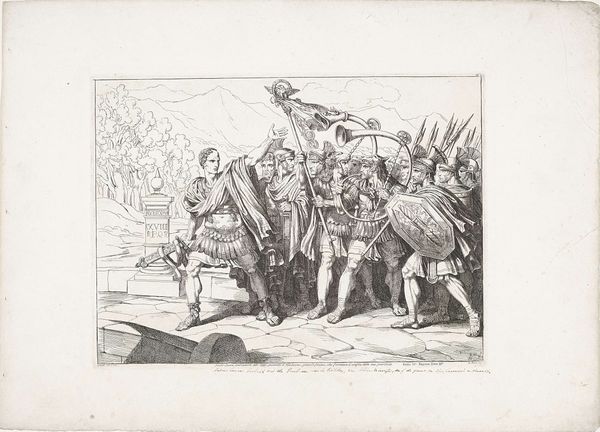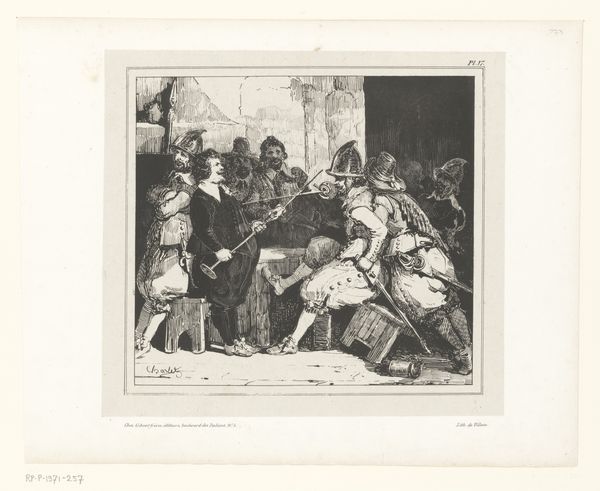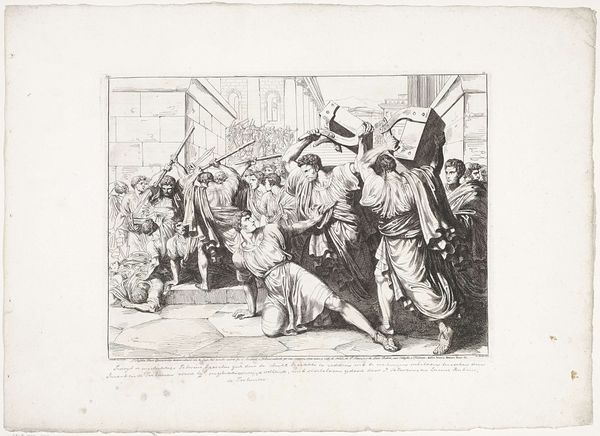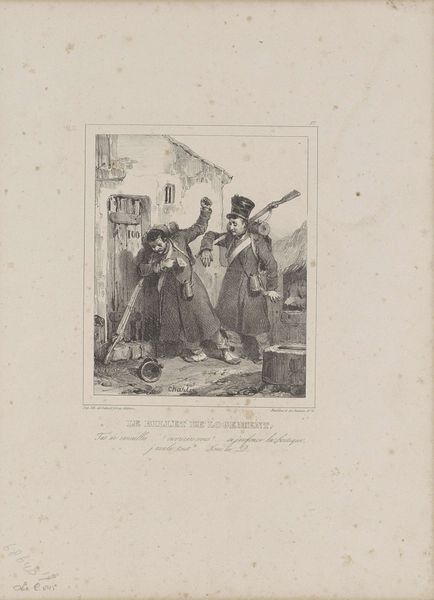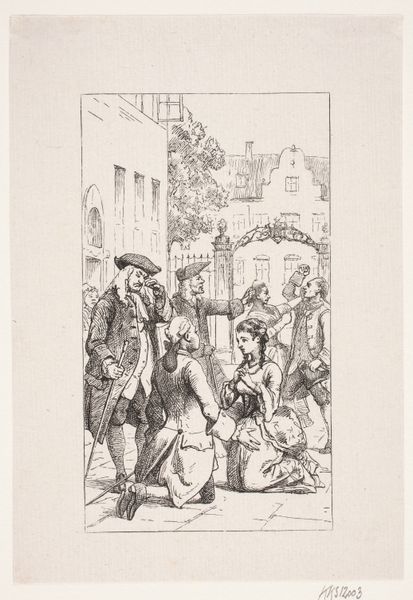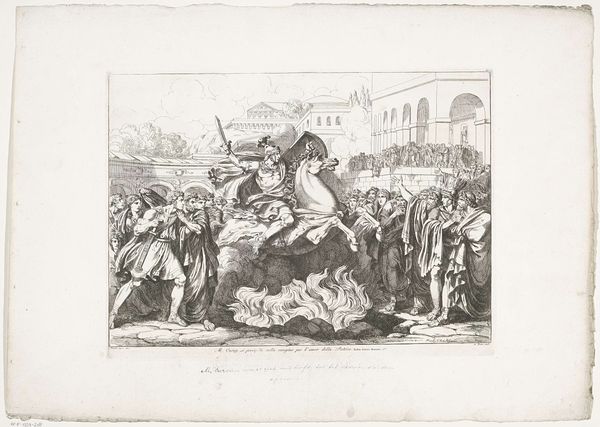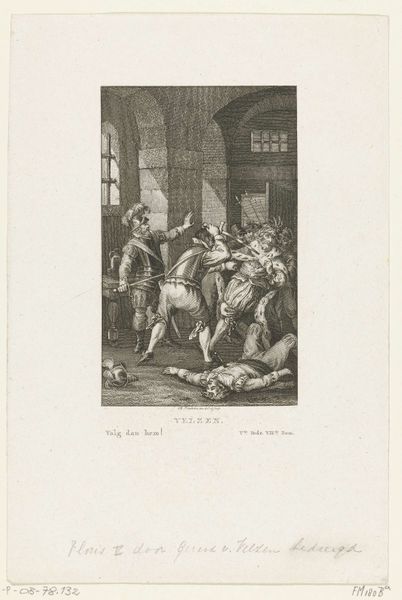
Badius van Capua vlucht na gevecht met Titus Quinctius Crispinus Sulpicianus 1819
0:00
0:00
drawing, etching, ink, engraving
#
drawing
#
ink drawing
#
narrative-art
#
etching
#
classical-realism
#
figuration
#
ink
#
line
#
history-painting
#
engraving
Dimensions: height 312 mm, width 422 mm
Copyright: Rijks Museum: Open Domain
Bartolomeo Pinelli made this etching of Badius van Capua fleeing after a fight with Titus Quinctius Crispinus Sulpicianus sometime before 1835. Pinelli’s decision to use etching, a printmaking technique where lines are incised into a metal plate with acid to hold ink, highlights the historical context in which this artwork was made. Unlike painting or sculpture, prints can be reproduced multiple times, making them accessible to a broader audience. This democratizing aspect speaks to the changing social and political landscape of the 18th and 19th centuries, where the circulation of ideas and images became increasingly important. The lines created through etching lend a distinct quality to the image, with varying thickness to create depth and shadow. It’s a labor-intensive process. Each print requires careful inking and pressing, reflecting a shift toward mass production while still retaining a connection to skilled handcraft. Considering the materials and making of this artwork helps us appreciate its role in disseminating historical narratives and shaping public opinion. It bridges the gap between fine art and the world.
Comments
No comments
Be the first to comment and join the conversation on the ultimate creative platform.
